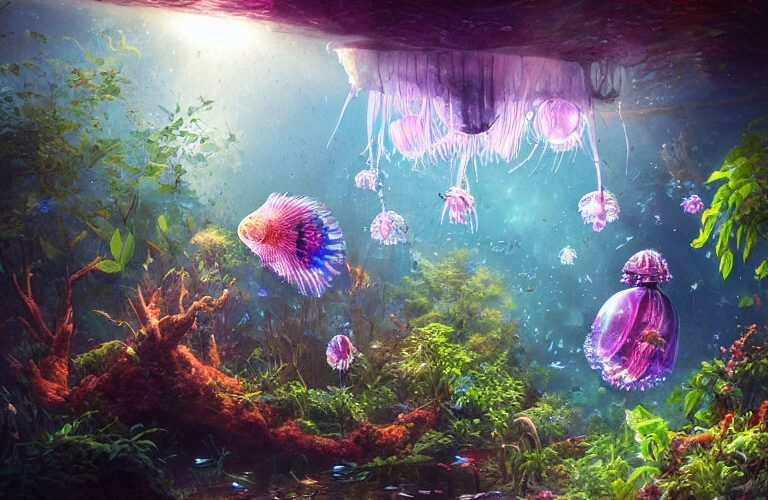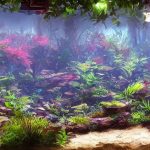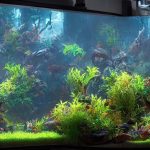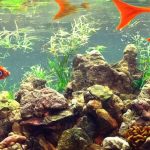Jellyfish have become increasingly popular pets in recent years, but with their unique needs come many questions regarding their care. The most important question that comes to mind is what size tank do jellyfish need? This article will provide an overview of the necessary requirements for a jellyfish tank, looking at factors such as water temperature and size. Additionally, this article will look at the types of tanks available and discuss which type of tank is best suited for jellyfish.

What is Jellyfish
Jellyfish have been around for millions of years, but it’s only recently that they’ve become popular as aquarium pets. With their mesmerizing tentacles and vibrant colors, jellyfish are a beautiful addition to any home or office. But when considering owning jellyfish, one of the most important things to consider is what size tank they will need.
Jellyfish come in a variety of sizes, from microscopic ones nearly invisible to the human eye to those that can grow up to two feet long. This means the size of your tank will depend on the type and size of jellyfish you plan on keeping. Generally speaking, tanks should be at least five gallons in volume for each adult jellyfish you intend to keep.
Types of Jellyfish
Jellyfish are a fascinating species of aquatic life that come in many shapes and sizes. These gentle creatures have been mesmerizing humans for centuries, but there is much more to them than meets the eye. When it comes to understanding jellyfish, one of the first steps is to familiarize oneself with the different types that exist.
The most common type of jellyfish is known as a medusa. This type usually has four oral arms and eight marginal tentacles, which are used for protection from predators and also help them catch food.
Another type, called a hydromedusa, has several long tentacles instead of just one short main tentacle-like medusas do. They also possess special organs called statocysts that help them sense their environment and navigate the water.
Tank Sizes: Small vs. Large for Jellyfish
When it comes to tank sizes for jellyfish, it can be difficult to decide whether to go with a small or large one. Both have their advantages and drawbacks, so let’s take a look at the pros and cons of each choice. Small tanks are much easier to maintain than larger ones; they require fewer water changes and fewer regular cleanings because of the smaller volume of water in use.
However, small tanks also have less room for decorations and other features that can make jellyfish feel more comfortable in their environment.
On the other hand, larger tanks offer plenty of space for decorating and creating a more complex habitat for your jellyfish, but they will need frequent cleaning due to the greater amount of water used.
Water Temperature: Ideal Conditions for Jellyfish
Water temperature is a crucial factor to consider when determining ideal tank conditions for jellyfish. Generally, jellyfish prefer temperatures between 24-27 degrees Celsius (76-81 Fahrenheit). This range of temperature allows the jellyfish to thrive in an environment that maintains their natural behavior and encourages proper respiration.
Additionally, temperatures below this range can cause stress to the jellyfish, potentially leading to health problems or even death.
Furthermore, it is important not to let the water temperature fluctuate too much over short periods of time; large changes in temperature can shock the jellyfish and put its life at risk. To maintain a steady water temperature, many aquarium owners utilize heating elements and thermometers. This ensures that the jellyfish will remain in an optimal environment for as long as possible.
Water Quality & Filtration: Necessary Equipment
When it comes to keeping jellyfish, water quality and filtration are two of the most important aspects. It is crucial to ensure that the tank has an adequate amount of clean, safe water at all times in order to keep your pet jellyfish healthy and happy. To achieve this, you should invest in quality equipment for filtration and water management.
The right filter can help to remove debris and waste from the tank, while also providing aeration for proper oxygen levels. Additionally, a strong circulation pump can ensure that the entire tank is receiving a sufficient supply of fresh water every day. This will help you maintain a good chemical balance in your tank, as well as reduce potential bacterial growth which could lead to illness or death in your jellyfish. Finally, be sure to invest in a reliable test kit so that you can monitor ammonia levels and pH on a regular basis.
Substrate & Decorations: Considerations for Jellyfish
When it comes to tank size for jellyfish, Substrate, and Decorations should not be overlooked. Not only do they affect the tank’s aesthetic appeal but more importantly, they play an important role in providing a healthy environment for these delicate sea creatures. In order to ensure that the jellyfish have enough space to move around and grow, careful consideration must be taken when selecting decorations for the aquarium.
The substrate is key when preparing a jellyfish habitat. Natural substrates such as sand or gravel provide an ideal foundation with many benefits including buffering pH levels and offering bio-filtration. When it comes to decorations, look for aquatic plants that are safe for jellyfish such as crinum calami stratum, or eelgrass species like Vallisneria spiralis.
Food & Feeding: How Often for Jellyfish
For many jellyfish enthusiasts, the tank size debate is a common topic of conversation. While there are several factors to consider when selecting a tank for jellyfish, one of the most important elements is understanding how often to feed them. Knowing when and how much food to give your jellyfish will help ensure they stay healthy and happy aquarium inhabitants.
Jellyfish can be fed a variety of items including brine shrimp, copepods, rotifers, krill, or other meaty foods like mussels or silversides. Generally speaking, adults should be fed every two days while juveniles should be fed daily. The amount of food that you feed should depend on the size of your jellyfish; however, it is important not to overfeed as this can cause problems with water quality in your tank.
Tank Set Up & Environment for Jellyfish
Welcome to the world of jellyfish keeping! Jellyfish require a special tank setup and environment in order to thrive. It’s important to understand the basics of setting up a home for your jellyfish before you purchase one so that you can provide them with an ideal living space.
When it comes to tank size, small jellyfish tanks are best for starters. The minimum recommended tank size is five gallons; however, larger tanks are preferable as they provide more room for growth and movement. Additionally, be sure to choose a tank made of glass or acrylic, as plastic can leach chemicals into the water which could harm your jellies.
To maintain water quality, you’ll need a filtration system such as an external filter or hang-on-back filter.
Conclusion: Right Size for a Happy Jellyfish
The size of the tank a jellyfish needs is an important factor to consider when looking to add one to your family. Jellyfish are delicate creatures that require very specific care and the right size aquarium can make all the difference in keeping them healthy and happy.
When it comes down to it, how big should you go for your jellyfish? Generally speaking, a ten-gallon tank should provide enough space for one or two small jellyfish. If you plan on keeping more than two jellyfish, you will need a larger tank – up to 20 gallons – depending on their size and number. It’s also essential that the aquarium has an efficient filtration system since they produce quite a bit of waste.
Overall, giving your jellyfish the right-sized tank is key in providing them with a good quality of life.




